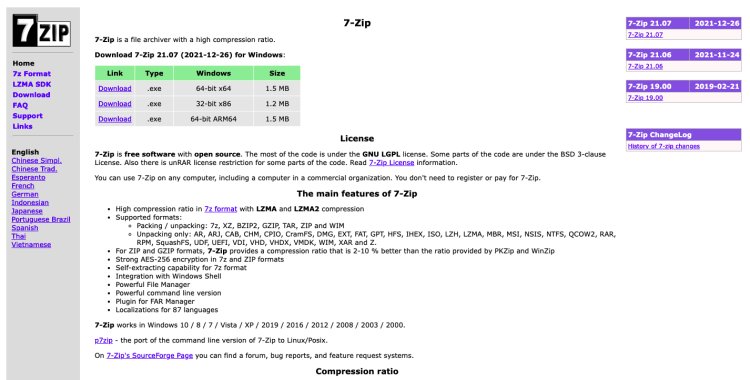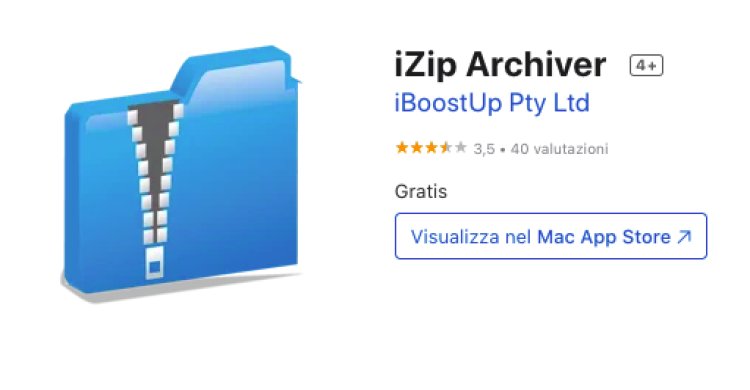How to extract ZIP files
Precisely for this reason, today I decided to explain how to extract ZIP files using both the standard features offered by operating systems and the use of third-party tools

There is no need to be a great computer expert to know that, by now, it is essential to have a program for managing compressed archives on your PC. Without this type of software, in fact, it is practically impossible to create and manage commonly used files such as ZIP, RAR, etc. archives. Sure, Windows and macOS support ZIP format files without the need for third-party programs, but this is a very basic feature that could be cramped by most.
Precisely for this reason, today I decided to explain how to extract ZIP files using both the standard features offered by operating systems and the use of third-party tools, which, in most cases, also integrate some interesting additional features. And if you do not want or cannot install new software on your computer, consider contacting online services specifically designed for this purpose, the ones you find always reported in this guide of mine.
To conclude on a high note, as they say, it will also be my concern to show you how to perform the operation covered by the tutorial from mobile, on Android and iOS, using ad hoc applications. But now just chat and let's take action. I wish you, as usual, happy reading and I wish you the best of luck for everything.

How to extract ZIP files on Windows
Let's start by going to find out how to extract ZIP files on Windows . Below you will find explained how to do it using the standard utility and excellent third-party software. It's very easy, don't worry!
Windows Compressed Archive Manager
First, I would like to explain to you how to extract files in ZIP format using the compressed archive manager already integrated in Windows (all versions). It is very easy to use and also allows you to create new archives.
To use it, just right-click on the ZIP file you want to extract, choose the Extract all option from the context menu that opens and press the Extract button in the window that subsequently appears on the desktop.
Later, the files contained in the compressed archive will be extracted to the same location as the latter. If the ZIP file is password protected, you will also be prompted to type it to continue with the extraction.
As an alternative to what I have just indicated, you can also extract the ZIP files by simply double clicking on them and pressing the Extract All button located on the toolbar in the File Explorer window that is shown to you.
If, on the other hand, you need to extract only some of the files in the archive, proceed as follows: double-click on the compressed archive and drag the icons of the files inside it from the window that opens to the output location you prefer .
7-Zip

7-Zip is a free program, of an open source nature and specific for Windows operating systems, used for the extraction of all the most popular compressed archive formats (ZIP, 7z, DMG, RAR etc.), including password protected archives and multi-volume ones. It also allows you to create new compressed files and is super easy to use. In short, what more do you want?
To download it on your PC, go to the program website and click on the Download link at the top of the page, corresponding to the version of Windows in use on your PC ( 64 bit or 32 bit ). When the download is complete, open the resulting .exe file and, in the window that opens on the desktop, click on the Yes , Install and Close buttons .
Now you can finally start using 7-Zip to decompress your ZIP files. Therefore, right-click on the ZIP file you wish to intervene in and select, from the contextual menu that opens, the items 7-Zip> Open . In the window that will later be shown on the desktop, click on the Extract button , then indicate the location on your computer where you want to save the extracted files and click the OK button . If the ZIP file is password protected, you will also be prompted to enter the password to continue.
You can also extract a ZIP file with 7-Zip by right-clicking on the relative compressed archive, selecting the 7-Zip item from the context menu that opens and choosing the Extract here option (if you want to extract the files to the current location) or the Extract option the files (if you prefer to define a precise location on your PC in which to extract the files).
Do you want to extract only some of the files present in the compressed archive? In this case, right-click on the latter, select the 7-Zip> Open items from the context menu, drag the files you want to extract out of the displayed window and drop them in the desired location.
Note: If you want to make 7-Zip the Windows default compressed archive manager, read my tutorial on how to change default program to find out how to do this.
How to extract ZIP files on macOS
Do you use macOS and would like to understand how to extract ZIP files even in this case? I'll settle you immediately. Below, in fact, you will find explained how to do it using the standard tool and a valid alternative from third-party developers.
Compression Utility
Like Windows, even on macOS there is a predefined compressed archive manager, called the Compression Utility , thanks to which you can extract ZIP files and create new compressed archives.
You ask me how to use it? Quite simply, double-click on the ZIP file you want to open and the files it contains will be immediately extracted to the current location. If the ZIP file is password protected, you will first have to type it in order for the extraction procedure to be completed.
As an alternative to as I just indicated, you can also open ZIP files by right clicking on them and selecting the Open item from the context menu that is shown to you.

iZip Archiver is a no-cost Mac-only application that can be used as an alternative to the Compression Utility. Good or bad it has the same operation of the standard compressed archives manager with the added possibility of opening ZIP files without having to extract the contents first.
To download iZip Archiver on your computer, visit the relevant
of the Mac App Store Online , press the View button in the Mac App Store and, once the Mac App Store window is displayed on the desktop, click the Get / Install button . If necessary, authorize the download by typing your Apple account password or using Touch ID (if you have a Mac equipped with this component). Then start iZip Archiver by pressing the Open button .
At this point, close the application window for creating a new compressed archive, click on the Open button located at the top of the other window left open, select the ZIP file on the Mac you want to open and press the Open button located at the bottom right.
Once this is done, a new window will open on the desktop where you will be shown the contents of the ZIP file. To extract the files in the archive, then proceed to drag them out of the window, dropping them in the position you prefer. If the compressed archive is password protected, you will be prompted to enter it before you can access its contents.
I would also like to point out that, as an alternative to what I have just indicated, you can extract a ZIP file by right clicking on it and selecting the Open> iZip Archiver options from the context menu that opens .
Note: if you want to make iZip Archiver the macOS default compressed archive manager, you can find out how to do this by reading my guide on how to change the default program that I reported to you in the previous lines, in the step dedicated to 7-Zip .
How to extract ZIP files online
As I told you at the beginning of the guide, there are also convenient Web tools that you can rely on to extract ZIP files without having to download and install anything on your computer. If this interests you, you will find listed below those that in my humble opinion represent the best in the category.
Archive Extractor
The first online service useful for this purpose that I recommend you to consider is Archive Extractor . It's free, requires no registration, works from any browser and operating system and allows you to extract files in ZIP, RAR, 7Z, ZIPX and many more. It also supports password-protected and multi-volume archives. It should also be noted that all files uploaded to the service are deleted within a few hours.
To use it, go to the home page of the service and drag the ZIP file you want to extract into the browser window. Alternatively, presses the Choose file from computer button in the center and "manually" select the compressed archive. If the file is online or on Google Drive or Dropbox , you can get it straight from there by first clicking on the correct link.
When loading is complete, wait for the compressed archive to be extracted (if the ZIP file is password protected you will be asked before typing the latter) and for the list of files contained within it to be visible on the screen. After that you can download the individual files to your computer by simply clicking on the name of each of them. If you have not changed the default browser settings, the files will be saved in the Downloads folder on your computer.
WOBZIP
As an alternative to the online service described above, you can evaluate the use of WOBZIP . It is an additional online service used to open compressed files (ZIP, 7Z, TAR, etc.), free, easy to use and functioning without the need for registration. It can be used from any browser and operating system and allows you to upload files with a maximum size of 200 MB. All the uploaded files are then deleted from the WOBZIP servers within a few hours.
To use it, connect to the home page of the service and click on the Browse from computer button to select the ZIP archive on your computer that you intend to extract. If the archive is online, you can download it directly from there by filling in the URL field with the relevant link . If the ZIP file you want to extract is protected by a password, remember to type it in the Password field .
Finally, click on the Uncompress button located at the bottom, after which you will finally be shown the contents of the ZIP archive and you can proceed with the download of the individual files by clicking on their names. If you haven't changed your browser's default settings, the extracted files will be saved in your computer's Downloads folder.
App to extract ZIP files
If you need to extract ZIP files on the go, you can rely on special apps for Android and iOS , in order to do everything from your smartphone or tablet, without having to go through your computer. They are super easy to use! Try them now on your device, I'm sure they will satisfy you.
- AndroZip by AVG ( Android ) - excellent application at no cost thanks to which you can extract ZIP files on Android devices. It is actually a file manager but it also allows you to open files in ZIP, RAR, TAR, GZIP and BZIP2 format. It also supports encrypted ZIP files and allows you to view many other file formats as well. In short, a real must have!
- X-plore File Manager ( Android ) - is one of the most popular no-cost file managers for Android. It allows you to browse the device folders, both network and cloud storage services, and also supports the extraction of ZIP files (both with and without password), which is why I decided to report it to you in this tutorial.
- Files ( iOS ) - is the stock iPhone and iPad app for managing files on iOS. It also allows you to extract compressed archives with a simple tap, which is why I chose to report it to you in this guide.
- Unzip tool ( iOS ) - no cost app for iOS devices only through which ZIP files and other types of compressed archives can be opened and created. It also supports connection to Dropbox and file transfer via wireless network.
For more information on the functioning of the apps just reported and to discover new ones, I refer you to reading my guide focused on apps to open ZIP files and my post dedicated to how to open a ZIP file on iPhone, stay tuned for it .
















